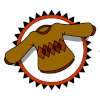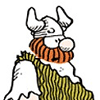Cycling through Stockholm
Stockholm is one of Europe's most beautiful cities. One-third water, one-third parks, one-third city, on the sea, surrounded by woods, bubbling with energy and history, Sweden's stunning capital is green, clean, and underrated.
And it's a city in love with parks, cafes, fine urban vistas, and biking. Sitting in one of those cafes and enjoying one of those fine vistas, I started talking with what's known as a "Latte Dad." Swedes get 390 days of parental leave (paid at 80 percent of their regular salary) which they can take at any time until their child is eight years old. At least 60 days must be taken by the dad, which encourages dads to be more hands-on with their children. And these dads clog the cafes with their baby strollers. This Latte Dad told me I should bike this island city's shoreline and harborfront at 4 a.m. He said, "With our long summer days, it's sunny and absolutely empty. It's just you and the birds."
Well, OK. But I found it's beautiful at 4 p.m., too. In fact, I make a point to bike in the early evening, when lots of people are out, the light is warm, and colors pop. Bike paths are a city-planning priority, and they run along the entire harbor. And Stockholm's park-like islands are biking utopias with little traffic.
Tracing the downtown shoreline while dodging in-line skaters and ice-cream trolleys (rather than cars and buses), you can pedal the watery perimeters of the old town (Gamla Stan) and along the trendy shore of Lake Malaren, with the sun shining red and orange and gold through the cocktails and beers on the tables of its outdoor lakeside cafes.
On your bike you can join the urban "paseo" down Strandvagen -- the harborfront of the trendiest neighborhood -- pedaling past weather-beaten historic sloops and below the top addresses in town. As you roll, keep in mind that there's free fishing in central Stockholm, and the harbor is restocked every spring with thousands of new fish. Locals tell of one lucky lad who pulled in an 80-pound salmon.
Strandvagen leads to my favorite biking zone, Djurgarden ("Animal Garden"), once the king's private hunting preserve. Just after the bridge at the entry to the island, you pass a blue gate which heralds the Royal Hunting Park, and you're in today's National Park. You never know where the sleepy lanes of Djurgarden take you. As if hiding out from the intensity of the city, Rosendals Garden Cafe crowns the summit of the island. You can get a picnic treat at the bakery or eat in the green house. I like to sip a coffee in their delightful orchard in the flower garden where locals come to pick a bouquet and pay by the weight. The cafe proudly serves its own produce ... its garden fertilized by horse dung from the neighboring Skansen folk museum. Rolling down the garden-like lane past Rosendals Slott, the mini summer get-away palace of a 19th-century king, I pass a giant 9-ton porphyry vase in a back yard and marvel at how, on a bike, you see things that those on tour buses never would.
Stockholm offers many biking opportunities. From Djurgarden, you could take a ferry to Skeppsholmen -- a small, central, traffic-free island park with the Museum of Modern Art. Or head to the island of Riddarholmen, featuring a historic church and a panoramic view of the city and Lake Malaren.
Renting a bike is cheap and simple. If you'd like to feel more like a local, consider the bike-share system. Cities all over northern Europe have loaner bike programs. Some cities lend themselves to biking, while others don't. Some programs seem designed exclusively for locals, while others work well for visitors, too. Stockholm's program offers us the best of both worlds: the city is great for biking and the system is straightforward for travelers to use.
For around $25, you can purchase a City Bike card at the tourist information office, transportation info centers, or at many hotels and hostels. The card allows you to grab a bike from one of the more than 90 City Bike racks around the city. You must return it within three hours to any rack, but if you want to keep riding, just check out another bike. You can do this over and over for three days.
Some travelers are surprised when I tell them to consider biking in Europe. I explain that it gets you close to the ground and close to the people. Europeans love bicycles, and they are often genuinely impressed when they encounter Americans who reject the view from the tour-bus window in favor of huffing and puffing on two wheels. Consider this cheap and breezy option next time you're in bike-friendly Stockholm.
IF YOU VISIT...
SLEEPING: Queen's Hotel, at the end of Stockholm's main pedestrian shopping drag, offers rooms with an old-fashioned feel (moderate, www.queenshotel.se). Europe's most famous youth hostel, Af Chapman, is a permanently moored schooner on Skeppsholmen that has been welcoming the backpacking crowd for decades (budget, www.stfchapman.com).
EATING: Restaurang B.A.R. has fish and meat piled on an ice-filled counter; you chat with the chef and choose your slab for grilling (behind the Grand Hotel at Blasieholmsgatan 4A, tel. 08/611-5335). Kryp In is the place to go for modern Swedish fare in a stylish, candlelit interior (a block off Stortorget at Prastgatan 17, tel. 08/208-841).
GETTING AROUND: Stockholm's fine public transport network includes the subway (called "T-bana"), buses, and a tram (www.sl.se/en).
FOR TOURIST INFORMATION: www.visitstockholm.com.
========
Rick Steves (www.ricksteves.com) writes European travel guidebooks and hosts travel shows on public television and public radio. Email him at rick@ricksteves.com and follow his blog on Facebook.
(c)2014 RICK STEVES DISTRIBUTED BY TRIBUNE MEDIA SERVICES, INC.






